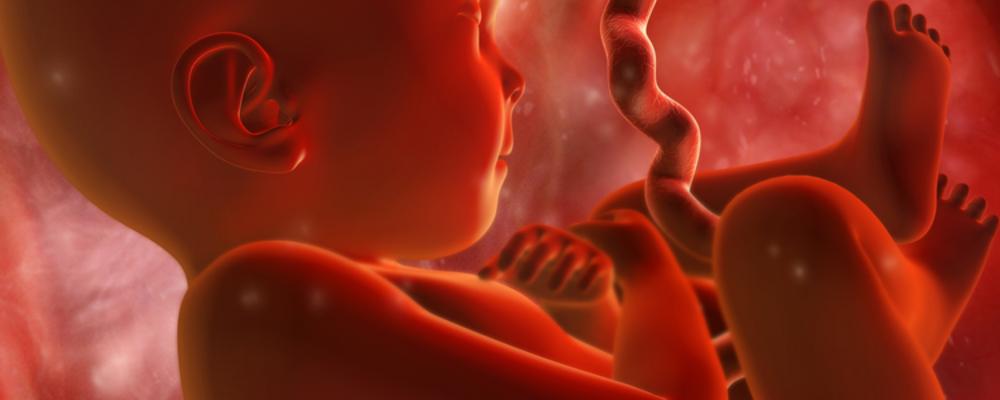
Foetal Alcohol Syndrome
Clare Allely's detailed account of what Foetal Alcohol Syndrome is, rate of occurrence, causes, core symptoms and frequently associated problems.
What is Foetal Alcohol Syndrome?
Foetal alcohol syndrome (FAS) can occur as a result of maternal alcohol consumption during pregnancy. Prenatal exposure to alcohol during pregnancy can cause damage to the developing foetus and is currently the most prevalent known preventable cause of birth defects and developmental disabilities. Children exposed to alcohol during foetal development can suffer multiple negative effects, including physical, cognitive and behavioural deficits. Negative effects can be major or minor but are usually lifelong. FAS was first recognised in 1973. A few years later, a research group in Gothenburg, Sweden stated that damage to the foetus by alcohol is the most common known health hazard by a noxious agent that is preventable (Olegård et al. 1979). However, currently, the majority of individuals with the syndrome probably does not receive a proper diagnosis, and this is partly due to the lack of a uniformly accepted diagnostic criteria and guidelines for referral.
The harmful effects of prenatal or intrauterine exposure to alcohol are collectively referred to as foetal alcohol spectrum disorders (FASD). The spectrum includes:
● Full-blown foetal alcohol syndrome (FAS)
● Partial foetal alcohol syndrome (pFAS)
● Alcohol-related neurodevelopmental disorder (ARND)
● Alcohol-related birth defects (ARBD).
It is important to note that FASDs are not a diagnostic category and therefore should be used only when referring to the collection of diagnostic terms resulting from prenatal exposure to alcohol.
FAS is currently the only expression of prenatal alcohol exposure (PAE) defined by the International Statistical Classification of Diseases and Related Health Problems. FAS accounts for 20-25% of infants and children exposed to all levels of prenatal alcohol exposure.
Some considerations when diagnosing FAS
FAS is a syndrome rather than a specific disease and therefore further clinical features can be present. For instance, as well as the key facial dymorphic features, maxillary hypoplasia is often observed in individuals with FAS. Maxillary hypoplasia is the term dentists use to describe the underdevelopment of the maxillary bones, which results in midfacial retrusion and producing the illusion of protuberance of the lower jaw.
Another aspect to consider when diagnosing FAS is that the features often change with age or development. For instance, after puberty, the characteristic facial features associated with FAS can be more challenging to identify. However, for most individuals with FAS, the key features remain constant.
Additionally, it is important to be aware that confirmation and documentation of PAE can be difficult to establish. For birth mothers, the admission of alcohol consumption during pregnancy can be considered to be stigmatizing. This situation can be further complicated if the woman continues to consume alcohol, especially at high rates.
Rate of occurrence
A number of FAS prevalence studies have been published, many of which have adopted different ascertainment methodologies, and they have produced very different estimates (range: 0.2--2.0 cases per 1,000 live births).
Causes
FAS can occur as a result of maternal alcohol consumption during pregnancy. Alcohol consumed prenatally crosses the placental barrier and can produce stunted foetal growth or weight, distinctive facial stigmata, damaged neurons and brain structures which can cause psychological or behavioral problems and cause other physical damage.

Core symptoms
Prenatal exposure to alcohol alone is not sufficient to warrant a diagnosis of FAS. A diagnosis of FAS should be considered if documentation points to the presence of:
1) All three dysmorphic facial features: A smooth philtrum (the groove between the nose and upper lip flattens with increased prenatal alcohol exposure), thin vermillion border (the upper lip thins with increased prenatal alcohol exposure) and small palpebral fissures (eye width decreases with increased prenatal alcohol exposure).
2) Prenatal or postnatal growth deficit in height or weight and head circumference.
3) Central Nervous System (CNS) abnormality. CNS abnormalities are classified as structural, neurologic, or functional. For instance, evidence indicates a small or diminished overall head circumference (i.e., <10th percentile). CNS neurologic problems can include seizures not attributable to a postnatal brain trauma or fever or other soft neurologic signs outside normal limits (e.g., coordination problems, visual motor difficulties, nystagmus, or difficulty with motor control). Very often there is a degree of depression of IQ and a developmental history consistent with either ADHD, ASD or both.
The diagnosis should be classified on the basis of available history as confirmed PAE or unknown prenatal alcohol exposure.
The majority of individuals exposed to alcohol prenatally do not display all of the physical abnormalities required for a diagnosis of FAS. However, despite the absence of physical abnormalities, they still exhibit significant neurodevelopmental impairments and thus meet criteria for pFAS or ARND. As a result, there is growing research interest in elucidating the neurodevelopmental impairments associated with FASD, as brain damage appears to be the most prevalent and devastating consequence of PAE.
Frequently associated problems
Common FAS-related mental health conditions (excluding attention and autism spectrum problems) include conduct disorders; oppositional defiant disorders; anxiety disorders; adjustment disorders; sleep disorders and depression. Attention problems are treated as a primary deficit resulting from alcohol-related CNS damage as opposed to a secondary mental health concern. Reduced adaptive skills and increased problems with daily living abilities have been previously documented in individuals with FAS (e.g., dependent living conditions, disrupted school experiences, poor employment records, and encounters with law enforcement, including incarceration).
Other related disorders
There are other conditions which frequently co-occur with FAS. However, these conditions are considered Alcohol-Related Birth Defects and not diagnostic criteria for FAS. Specifically:
• Cardiac abnormalities— A heart murmur that frequently disappears by the time the infant reaches one year of age. Ventricular septal defect most commonly seen, followed by an atrial septal defect.
• Skeletal abnormalities — Joint anomalies including abnormal position and function, altered palmar crease patterns, small distal phalanges and small fifth fingernails.
• Renal problems — Horseshoe, aplastic, dysplastic, or hypoplastic kidneys.
• Ocular deficits — Strabismus, optic nerve hypoplasia (which can cause light sensitivity, decreased visual acuity, or involuntary eye movements), and other fairly typical fundus abnormalities
• Occasional abnormalities — ptosis of the eyelid; microophthalmia; cleft lip with or without a cleft palate; webbed neck; short neck; tetralogy of Fallot; coarctation of the aorta; spina bifida and hydrocephalus.
Treatment
The brain damage caused by prenatal exposure to alcohol is irreversible, there is no cure. However, treatment is possible. Given the wide range of CNS damage, symptoms, secondary disabilities, and individual needs, there is no one treatment type which would be effective universally.
Author
Clare Allely
Selection of our publications on Fetal Alcohol Syndrome
Prevalence of Fetal Alcohol Spectrum Disorders: A Pilot Study in Western Sweden 2025)
The FASD Eye Code: a complementary diagnostic tool in fetal alcohol spectrum disorders. (2021)
Thinner retinal nerve fibre layer in young adults with foetal alcohol spectrum disorders. (2021)
[Congenital alcohol injuries should be identified in schools]. (2016)
[Time to take fetal alcohol spectrum disorders seriously]. (2014)
Prenatal alcohol exposure and neurodevelopmental disorders in children adopted from eastern Europe. (2010)